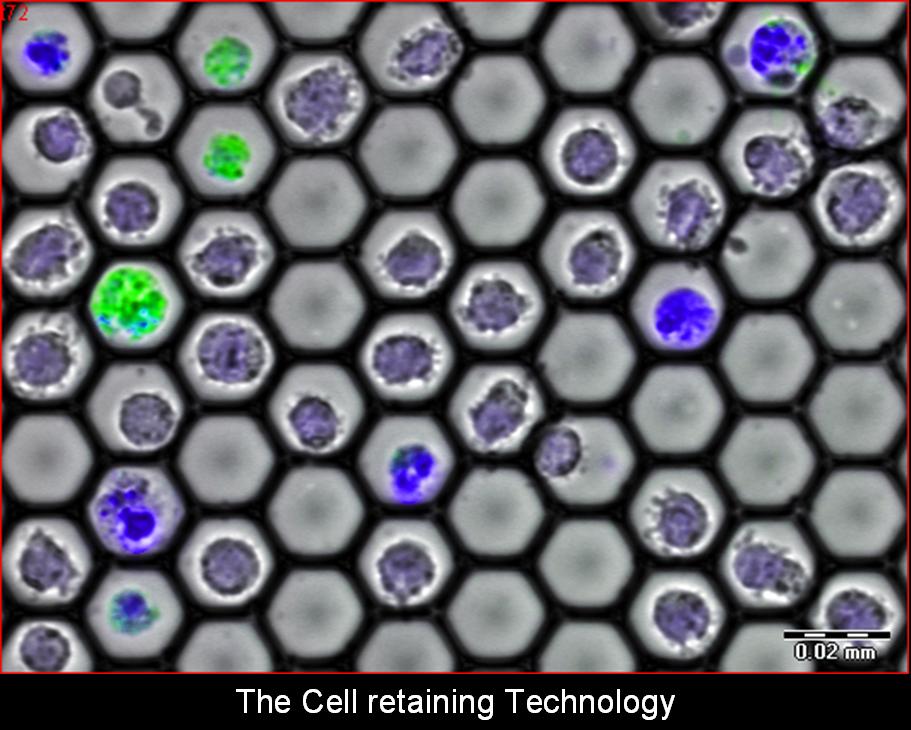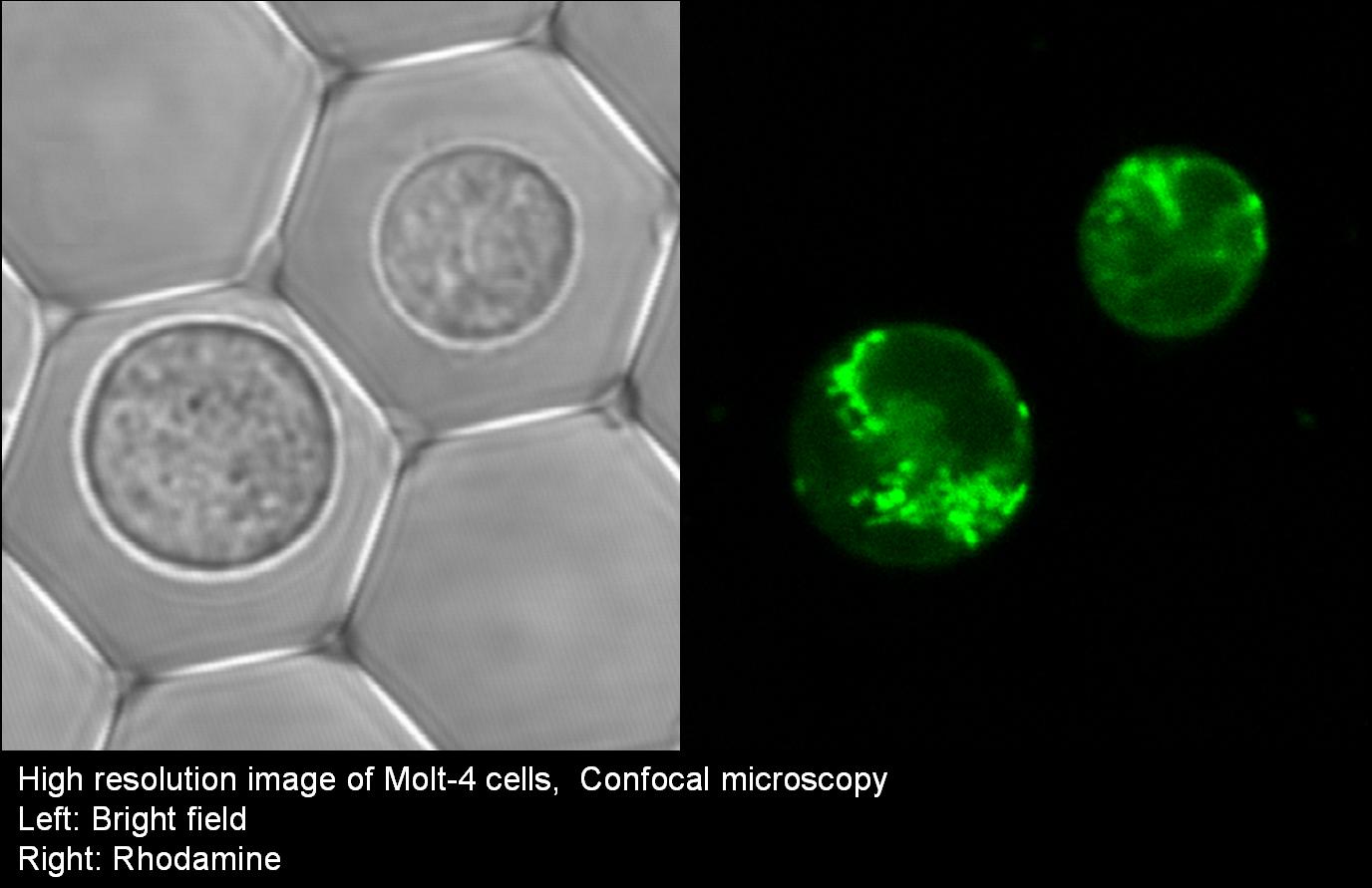Cell-Retaining (CR) methodology and optical measurements
The essential features of the CR are being developed by implementing the concept of a closely packed 2-Dimensional array of high-quality transparent negative micro-lenses, where each concave micro-lens functions as a picoliter-well (PW) designed to hold a single cell without tethering. Various PW sizes and geometries are being designed to best fit specific individual cell or cell-cluster sizes, ranging from 15µm (for single lymphocytes) through 100µm (for cell-to-cell interaction/communication studies on small groups of cells) to 250µm (for cell islets).
The Cell Retainers are designed to allow continuous cell treatments and bio-manipulations (staining, rinsing, media exchange, etc.) during sample observations via various types of microscopy: upright, inverted, confocal, multi-photon excitation, etc. The cells’ multi-parametric observations include transmitted light and various fluorescence measurements: FP (Fluorescence Polarization), FRET (Fluorescence Resonance Energy Transfer), FLIM (Fluorescence Lifetime Imaging), FRAP (Fluorescence Recovery After Photo-bleaching), FLIP (Fluorescence Loss in Photobleaching), FLAP (Fluorescence Localization After Photobleaching) and TIRF (Total Internal Reflection Fluorescence microscopy).

